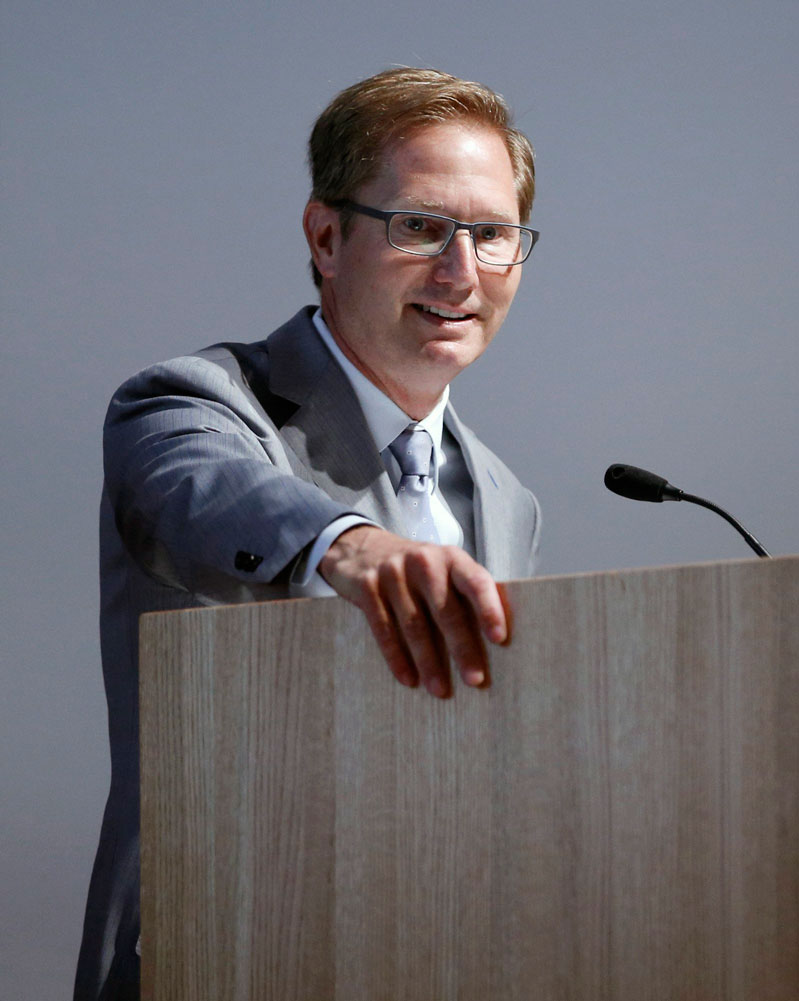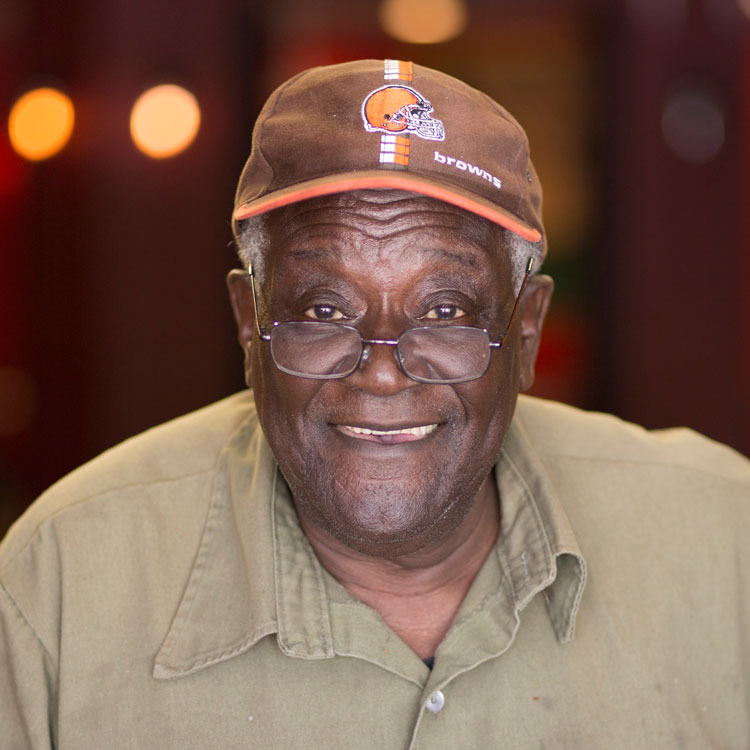By Rick Rouan and Mark Ferenchik The Columbus Dispatch
Flying cars never took off. Humans haven’t colonized the moon. Hoverboards that fly high in the air still haven’t materialized outside the big screen.
We’ll forgive the prognosticators of the past for missing the mark. Predicting the future is tricky business.
But as central Ohio lights the fuse for a population explosion, it’s important to anticipate the effects of that growth. We wonder what that will mean for neighborhoods. What will the Columbus skyline look like in 20 years? Will most cars drive themselves?
We asked city leaders, futurists and neighborhood experts to gaze into their crystal balls, and some common predictions emerged.
The city’s skyline will continue reaching toward the clouds, and the parking lots and other empty spaces between existing developments will continue to disappear as more people populate the city center.
Suburban evolution will be watched closely. Living far from the urban core, once reserved for the affluent, might become the affordable alternative to living in the city, where home prices have risen steadily in the past two decades.
Our steering wheels are likely to disappear — eventually. Autonomous vehicles are an inevitable symbol of a transportation revolution that is very real and which experts believe could revolve around Columbus.
Automation also could wipe out many low-skill jobs, potentially setting up the city for an employment crisis among low-wage workers.
Many of the city’s struggling neighborhoods likely will emerge from decades of population loss and economic turmoil. While they rise, though, others could fall.
Columbus and the seven-county metro area are getting bigger, and signs indicate the growth will only accelerate. Columbus already has bumped out Indianapolis to become the second biggest city in the Midwest, and it now is 14th largest in the nation, the latest census estimates show.
“The exciting part of the next 20 years is how we’re going to thrust ourselves into the top tier of big cities in America, but doing it our way,” Mayor Andrew J. Ginther said.
What may be more important than predicting the future is for city and county leaders to plan better together — now — to prepare for that future.
“I don’t know that there’s anyone with ownership of any overarching comprehensive vision for the city,” said Michael Bongiorno, an architect and director at DesignGroup.
Predicting growth
No prediction is etched in stone, and much depends on how fast the area grows.
Community leaders assume an additional 1 million people will populate the seven-county region by 2050, as the Mid-Ohio Regional Planning Commission (MORPC) has projected. Some say that estimate is conservative, even though the region’s growth traditionally has been slow and steady.
“A lot can happen in 35 years. It’s relatively easy to project births and deaths, at least at an aggregate level,” said economist Bill LaFayette, founder and owner of Regionomics LLC in the Columbus area. “It’s much harder to predict net migration. That’s where population projections tend to go wrong.”
MORPC based its projection on the 115,000 people the seven-county region added between 2010 and 2015. About half of that was due to births, with another quarter moving here from outside the region and the rest coming from abroad, said Liz Whalen, a data analyst for the commission.
“We’ve become a kind of economic magnet,” Whalen said. Those numbers could change, based on unforeseen factors such as immigration restrictions or economic downturns.
“There is certainly room for the possibility that the growth trend could level off between now and 2050,” she said.
But unpredictable events or economic factors could cause the area to grow even faster than predicted, too.

Alex Fischer, president and CEO of the Columbus Partnership of business leaders, is convinced that the metro area will grow to 3 million in just 10 to 15 years.
“It’s gonna happen way quicker than the historic modeling suggests,” Fischer said. “It’s a city that sits in the center of a population that’s young, vibrant, innovative,” citing the 150,000 college students in the area.
Henry Butcher believes that, too. The owner of the Creole Kitchen restaurant on Mount Vernon Avenue on the Near East Side said it is possible Columbus’ population could vault into the country’s top 10 in 20 years. The city’s population now tops 860,000, by far the largest in Ohio. Butcher, a 69-year-old native of Shreveport, Louisiana, notices the new apartments rising in his neighborhood.
“I remember when they used to call Columbus a cowtown,” he said.
Many predict that the biggest population growth will be among young adults and senior citizens.
That means the region must make preparations on two fronts.
Planners need to develop walkable, vibrant communities to attract young residents, and the region needs enough desirable jobs to keep them here.
At the same time, they recognize the need to prepare for an aging population that will need to live within easy access of amenities. The growing elderly population could put added stress on an already overworked health-care system.
“You can’t have multi-unit housing for old people isolated from the rest of communities,” said Ned Hill, a professor in Ohio State University’s John Glenn College of Public Affairs. “We can’t afford to have the form of nursing home industry that we currently have.”

Strengthening its core
Instead of stretching out to the suburbs where they might find more space, baby boomers and millennials are looking to live where they can walk from work to home and stop for dinner in between.
Many of them will flock Downtown as Columbus, long known for sprawling across the countryside, continues its more recent trend of packing people in tighter at its core. MORPC identified density as a major trend for Columbus’ future in its Insight 2050 report.
Buildings will grow taller. Parking lots will disappear under development.
Most Columbus residents don’t live Downtown, and aggressive growth means that new apartments and urban clusters will mushroom all over the region. But developing a vibrant Downtown and reviving central-city neighborhoods is important because that creates thriving, dense areas that draw young and old alike to the city.
Between 2007 and 2016, more than $1.7 billion in private development Downtown has been completed, proposed or is under construction. During that time, public development completed, planned or in progress totaled another $1.9 billion, with most of that on Downtown highways.
Continuing improvements to Interstates 70 and 71 through Downtown will be needed so that traffic flows more smoothly. Development also requires more office and commercial projects and more bars, restaurants and nightlife in order to create a more 24/7 central city. Think of the nodes being created now, such as South 4th Street, with places such as Hadley’s, Little Palace, El Camino and 16-Bit Bar & Arcade. Or farther up 4th, with Pins Mechanical Company, Wolf’s Ridge Brewing and the Elevator Brewery Taproom.
In the past 20 years, the Arena District replaced a long-vacant state penitentiary and attracts not only sports fans but also young people looking for nightlife. Concerts and festivals play out at John F. Wolfe Columbus Commons, a park that replaced a dying mall. The recently developed Scioto Mile park helps lure people to the Downtown riverfront.
Still, Columbus sprawls across 225 square miles, the byproduct of annexations in the 1960s and 1970s, making it difficult to develop a dense, walkable city center.
“We still struggle with the fact that it is one of the largest, most spread-out downtowns of any city our size in the country,” Ginther said. “Many other big cities have much more dense, highly concentrated downtown areas.”
Al Edmondson, a barber and Mount Vernon-area community leader, said he sees Downtown growing so much that it will absorb his neighborhood east of I-71 in two decades.
“It will be pretty vibrant,” he said of the neighborhood. “It will be more appealing to come and live.”
In 2000, 3,500 people lived Downtown. Today, there are 8,100 Downtown residents. That could more than double to 17,000 in 10 years, said Marc Conte, deputy director of the Capital Crossroads Special Improvement District, which represents business owners and helps keep Downtown areas clean while providing security. By 2037, Conte expects Downtown’s population to be 27,000.
Conte expects the momentum for Downtown housing to continue. Residential developments have been the most high-profile Downtown projects since 2002, thanks to tax incentives created by former Mayor Michael B. Coleman’s administration, Conte said.
The Arena District, LifeStyle communities rentals at 250 S. High Street and RiverSouth, the developing area of apartments and offices west of High Street and south of Broad Street near the Scioto River, have contributed to the Downtown renaissance as well, he said.
Although living Downtown might be desirable, not everyone will be able to afford it. Twenty-two percent of housing Downtown is considered affordable, and not market-rate, Conte said.
Conte expects the amount of affordable housing to shrink, and the city needs to pay attention to that.
“We need to ask that question of every neighborhood in Columbus,” Conte said.